Kevin Griffin is a happy man, and why shouldn’t he be?
Ford sits at the top of the fleet ladder when it comes to sales, and Kevin’s legs probably still ache from the miles he had to trek to pick up numerous gongs at this year’s Fleet News Awards.
As fleet operations director at Ford, Kevin collected five prizes on behalf of the blue oval. The Transit won Best Medium Van, Mondeo picked up Best Large Family Car and Company Car of the Year and S-MAX was named Best People Carrier.
Ford also won Fleet Manufacturer of the Year for the second year in a row.
“We are absolutely delighted,” says Kevin. “Picking up manufacturer of the year last year was great, but two years in a row is just fantastic.
“Transit is an excellent brand for us in an ever competitive market, so picking up an award for Transit is superb.
Capturing new customers
“S-MAX, when we first launched alongside Galaxy, caused a few people to scratch their heads about us having two seven-seaters in the marketplace, but we’ve proved that it works and captured new customers to the brand, which was our intention on launching the product.
“Mondeo has gone through a lot of research so to pick up an award for being best car and us being best manufacturer is more about the intangible than the tangible.”
Kevin puts Ford’s success down to a mixture of investment and a willingness to listen to customers.
“The key ingredient is to listen,” he says.
“It’s important to have the right products and to make sure that during the research and development you are in communication with your customers.
"It’s absolutely critical to listen while you’re designing and building.
“Once the product is in the marketplace it’s about listening to the customer on a regular basis, not only to update the product but to update the way you serve the customers and really make sure that the things you aren’t doing right, you put right very quickly.
"You then gain their confidence and trust.”
Such interaction with fleet managers and end users helps to ensure that Ford stays at the top of the fleet tree.
“Being the market leader makes you a target for all competition,” Kevin explains.
“But having access to more customers and a dialogue with them, providing you respond correctly, does give you an advantage because you’ve got more mouths telling you what’s right and what’s wrong.
"The only thing you should never do – and hopefully we won’t – is become complacent.”
With any commercial success, complacency and arrogance are always a danger, especially in such a competitive marketplace, he says.
“I just hope that we don’t display it and that our interaction with the customers is such that they don’t allow it.”
The Ford fleet strategy is not to only provide cars that are cost effective for fleet managers, but are also desirable to the drivers themselves.
“The feedback we’re looking for is that people want our cars as well as have the cost of ownership and all the dependability that’s there,” Kevin says.
“A lot of fleet customers historically will have gone on transaction and acquisition price.
"The halcyon days of Cortina, where Ford enjoyed a 30% share and people were willing to wait 20 weeks for a vehicle and the end user had very little choice, have gone.”
Dramatic changes
“With the taxation on cars, the influence of HR policy and so on, solus-type fleets and that way of purchasing cars is rapidly diminishing.
"Therefore you have to operate in the real market, you have to excite and delight your customers, you have to provide real wholelife cost benefits and trust to the people that are purchasing the vehicles as well as the contract hire.
"There is a dramatic change in the industry that we need to react to and reflect.”
The aim of Ford vehicles, Kevin says, is to create a design that is practical, will appeal and reflects the core values of the brand.
“Ford wants to be in the heartland of the marketplace – that’s not going to change,” he says.
“Therefore, we are producing cars that give the consumer value and choice. It’s a family space when it needs to be a family space.
"And you need to take a number of design characteristics into the vehicle to make sure you’re not over-compromising one over the other.
"It’s easy to design a very sleek car that looks dramatic. Whether that provides the customer with the internal package and the dimensions that they really want is a completely different thing.”
Stern challenges
Money and the environment present the fleet industry with its sternest challenges, Kevin believes.
“The immediate issue is the credit crunch,” he says.
“There appears to be no downturn in the car industry at this stage.
"The industry is strong both in retail and fleet.
"From a Ford perspective our timing is good in that we’ve got very desirable products out there.
"We’ve got a waiting list, a pretty high order bank and at the same time, as an organisation, we’ve right-sized the business and turned the company around to generate some profits, which is absolutely critical to future investment.
"Our ability to be nimble and react to the marketplace is pretty strong, I think that’s where we need to be.
“In the short term, the environment is clearly very high on the agenda and we’re in very good shape. We have a number of vehicles available emitting less than 120g/km of CO2 which will be pretty strong for us.”
Medium-term planning
The most important lesson that Kevin has learned during his time in fleet is that action needs to be taken over the medium term, not the short term.
“From the time I arrived in 2003 we made a decision that ultimate fleet leadership wasn’t important because there’s a cost associated with that,” he explains.
“What is important is building the trust and reliability in our products, RVs and everything we offer the customer.
“You can only do that over time. It was only two-and-a-half, maybe three years, into my tenure that I could say it’s really my strategy coming into the marketplace. I think that’s absolutely critical.
“The other part of the equation is to make sure that as well as the tangible offering, the product, the intangible offering to your customers is what they want and is ahead of others.
"That comes back to listening, responding and making sure that what we deliver has value.”
Kevin’s top tips:
1. ENSURE YOU UNDERSTAND HOW TO REDUCE YOUR FLEET COSTS
“Wholelife costs are key to running the most effective fleet. Understand the changes announced in the Budget and how lowering CO2 can save your company and your drivers money as well as assisting the environment.
“The sub-120g/km and 160g/km breakpoints are key and will help you with write-down allowances against corporation tax, Vehicle Excise Duty, National Insurance and P11D.
“Make sure your driver mileage is fully understood and is accurate.
"Make sure that you are not just calculating on the average mileage of the fleet.
"Service costs on high mileage cars can make a difference to your actual results where brake and tyre wear can be expensive.”
2. FULLY DEMONSTRATE BEST DUTY OF CARE TO YOUR EMPLOYEES
“Changes in legislation put the onus of care with the owner of the vehicle as a company car is a part of the workplace environment.
"Even employees using their own vehicles on company business need protection. NCAP ratings, intelligent protection systems and electronic stability are all key factors in the standard specification of vehicles.
“Ensure drivers of commercial vehicles have the appropriate storage facilities close to hand in the cab.
"If you know they are going to use equipment, even a clipboard, think about the safest environment possible.
"If your drivers use mobile telephones ensure Bluetooth is in the vehicle.”
3. TAKE SOME OF THE ADMINISTRATIVE BURDEN AWAY – SIMPLIFY YOUR OFFERING
"There is no such thing as a bad car or commercial vehicle.
"However, offering your employees all available vehicles will add cost and inefficiency.
"Complexity at the very least adds time which costs money. Service and parts costs may not only differ enormously from manufacturer to individual model, but also the actual prices charged at the manufacturer franchise may also differ – check it out. You may be surprised.”
4. REVIEW YOUR OWN DRIVERS’ CUSTOMER SATISFACTION
“The other high-cost factor is the service level you receive and ease at which your employees operate the product.
What pre and post-sales support do you receive?
What is the downtime on your fleet?
Are your employees fully productive or are they facing non-productive hours due to high maintenance or remote service availability?
"Is this data a part of your cost analysis?”
5. LAST BUT NOT LEAST – HAVE FUN!
“We all work in a dynamic industry that can be very absorbing.
"Remember to laugh and smile and give thanks when things have gone well.
"We are all lucky to be part of a vibrant industry that relies on people and the interaction of people – you must be good at what you do or you wouldn’t be doing it. Enjoy it, enjoy life!”
The man
Kevin Griffin joined Ford 30 years ago, after deciding not to pursue a promising career as a professional footballer.
A West Ham supporter, he was offered apprenticeships at Arsenal, Manchester City and West Bromwich Albion when he was aged 16, but was persuaded that professional football was a risky profession and stayed in education.
His first job for Ford was in personal import/export in London where he sold cars to embassies.
“The biggest task was – how do you get into an embassy?
"There are various things you learn about sales techniques and getting people’s confidence,” he says.
Kevin then worked for Ford of Europe in advertising, sales planning and programming which gave him insights into how the organisation and industry works.
He has been fleet operations director since 2003.




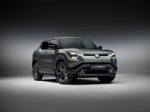
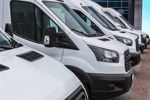

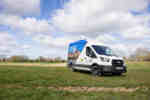

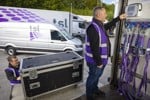


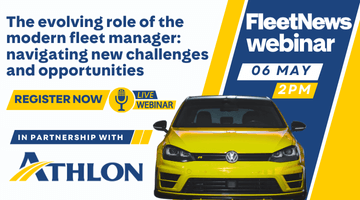
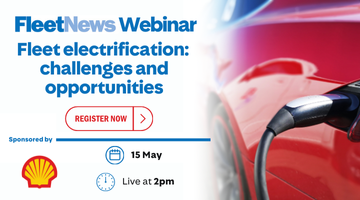
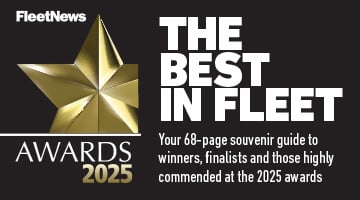

Login to comment
Comments
No comments have been made yet.